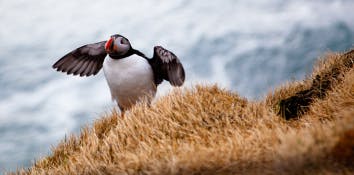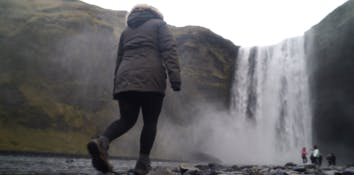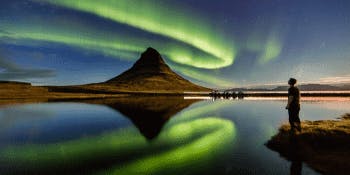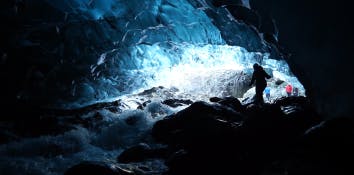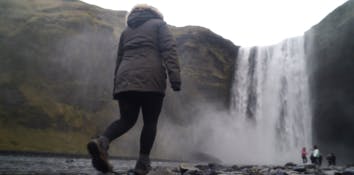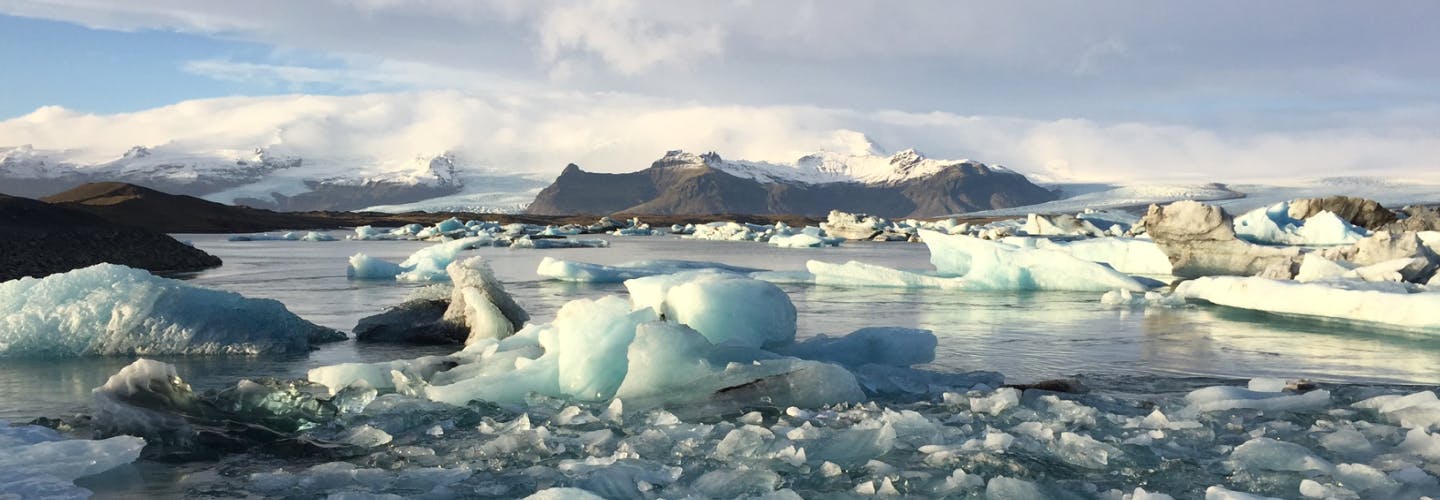
Iceland Travel Guide
Whether you're travelling in the winter for a spectacular view of the Northern Lights or for midnight sun, whale watching, and scenic cycling in the summer, Iceland makes for an unforgettable adventure.
What you'll find in this guide:
Top things to do
Practical info
What's the weather like?
Getting to Iceland
Getting around Iceland
Top attractions
Best time to visit
What to eat
FAQs
You can find more great video content on our YouTube channel
Holiday Extras Travel Guides
GMT
Icelandic Króna ISK
Icelandic
Type C & F
3 hours
Practical Info
Iceland map
Iceland is an island located in the North Atlantic Ocean, midway between North America and mainland Europe. Check out our handy Iceland map below to get a better feel for the island.

Language 101
Icelandic, a variant of Old Norse, is one of the world's oldest recorded languages. The pronunciation isn't easy, but fortunately most Icelanders speak English so you shouldn't have much difficulty.
If you'd like to try a few local phrases, here are some for starters:
- Hello – Halló/Góðan dag
- How are you? – Hvað segir þú?
- I'm fine – Allt gott
- What's your name? – Hvað heitir þú?
- My name is... – Ég heiti ...
- I'm from... – Ég er frá ...
- Goodbye – Vertu blessaður
- Cheers! (to toast) – Skál!
- Yes – Já
- No – Nei
- I don't know – Ég veit ekki
- Excuse me – Afsakið!
- How much is this? – Hvað kostar þetta?
- Sorry – þvÍ miður
- Please – Gjörðu svo vel
- Thank you – Takk
- Help! – Hjálp!
ð is pronounced like "th" in "that"; þ is pronounced like "th" in "thistle".
How expensive is Iceland?
The currency of Iceland is the Icelandic kronur (ISK), but you won't need to bring pockets full of cash with you as almost all shops and businesses take card. In rural areas, you may find completely automated petrol stations where you have no option but to use a credit or debit card, so have one with you at all times when driving.
Iceland can be pricey, but you can avoid some of the bigger costs by doing your research and booking early. Hire cars are always cheaper off-season, so travel outside of the June-July peak and book well in advance to get the best deal.
Public transport can get you to most places if you don't mind a slightly slower journey - it'll be cheaper than booking a tour or a taxi. Meals out are a little expensive but worth saving up for as a special treat - expect to pay ISK 2500-3500 (£20) for lunch in a cafe and around £70 for dinner for two.
Jabs, visas and other advice
For up-to-date advice on jabs, visas and other foreign advice, we recommend following the government's website.
Emergency numbers
For any emergency, call 112.
What's the weather like?
December, January and February in Iceland is cold. Temperatures in the winter months reach as low as -1°C to -2°C, and you can expect short daylight hours, wind and snow. Packing warm layers is a must!
Spring brings crisp weather and normal daylight hours. Temperature averages range from 3°C in March to 9°C in May, so you'll still need to pack warm clothing, especially for the chillier evenings.
Even in summer Iceland is fairly cool, with temperatures averaging around the 12°C - 14°C mark, so we'd still recommend packing layers and a light jacket. You'll be able to enjoy long days full of sunlight as Iceland experiences the phenomenon known as the Midnight Sun – the sun never completely drops below the horizon during the entire months of June and July.
Autumn marks the beginning of the Northern Lights season and brings cooler temperatures of around 10°C in September and 4°C in October. You're likely to experience overcast skies, wind and rain and the odd glimpse of sunshine. As the Icelandic saying goes: "If you don't like the weather, just wait 5 minutes."
For up-to-date weather information from the Icelandic Meteorological Office, take a look at Vedur.
Getting to Iceland
The easiest way to get to Iceland is to fly. The national carrier, Icelandair, normally flies from London (Gatwick and Heathrow), Birmingham, Manchester and Glasgow. EasyJet also flies from London, Manchester and Edinburgh. Expect to be in the air for around three hours and to pay around £50 to 100 each way, depending on the season.
Getting to Reykjavik from the airport
KeflavÍk International Airport is about 30 miles from the centre of Reykjavik and is well connected by public transport. Public buses run nine times a day – for a quicker and more direct option, book either a Flybus or Grayline Airport Express to Reykjavik city centre. These shuttles are timetabled according to flight arrivals so are very convenient, and you can book to the city centre or direct to your accommodation. Expect to pay 2,000 to 3,000 ISK (£14 to £20).
Taxis from the airport are all metered. A private taxi from Keflavik to Reykjavik takes around 45 minutes and costs in the region of 15000 ISK (£100), meaning this option is only really good value if there are a few of you travelling together.
If you're picking up a hire car to do some road-tripping around the country, collecting the car at the airport makes sense – all major car rental companies including Hertz, Alamo, Europcar and SixT have airport pick-up and drop-off options. Hiring a car is a great way to see more of Iceland, with rental prices for a small city runaround starting at around £40 per day.
To avoid any stresses at the airport, why not book an airport transfer with Holiday Extras before you travel? With prices starting from just £15.20, plus a great choice of shared and private vehicles, it's a great choice for a hassle-free start to your Icelandic adventure.
Getting around Iceland
You can get to major towns and attractions in Iceland by public transport. A bus fare costs 350 ISK (£2), and if you ask for a skiptimidi (which means bus transfer) you can transfer your ticket to a second bus within 75 minutes to continue your journey. Plan your journey online with the Straeto bus network, or download their free app. You can use the app to buy your bus tickets – bear in mind if you buy them when boarding you'll need the exact amount, as bus drivers don't carry change or take card.
If you really want to take in the beauty of Iceland and get off the beaten track, booking a hire car with Holiday Extras is the convenient option. Iceland's famous Ring Road (Route 1) encircles the island, passing scenic attractions like Skógafoss and Jökulsárlón plus most of the country's major towns.
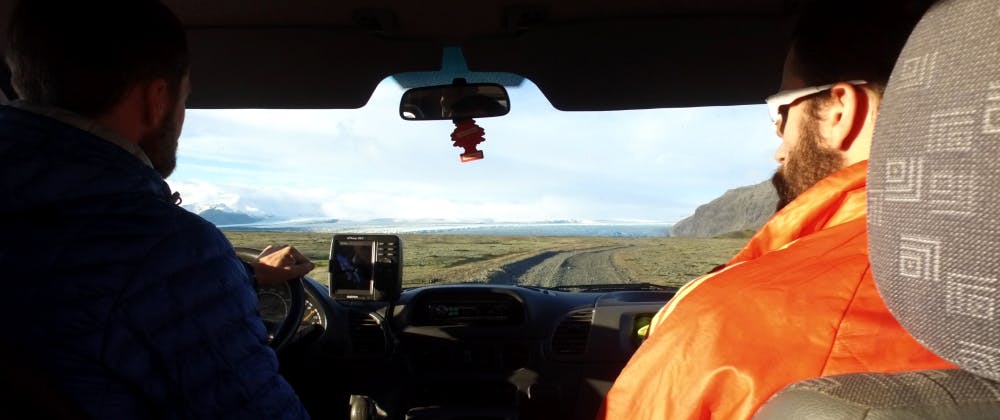
The 800-mile Ring Road takes around 17 hours to drive and can be completed in a week, but a longer trip will allow more time to explore. Summer is the best time for a driving holiday as the roads are open, conditions are good and there's plenty of daylight. Self-driving in winter is not recommended as weather conditions can be hazardous.
If you're driving on Route 1 or other paved roads, you don't need any special vehicle or equipment. If you're heading inland, where gravel tracks significantly outnumber paved roads, you'll need a four-wheel drive (all roads marked "F" are for four-wheel drive vehicles only). Off-road driving is strictly forbidden, with a hefty fine for offenders. Stick to marked roads and tracks only.
Watch out for a few rules of the road. For a start, Icelanders drive on the right. As in other Nordic countries, you need to have dipped headlights on at all times, even in summer during daylight hours (you may find the headlights on your hire car come on automatically for this reason). The speed limit is 50km/h in built-up areas, 80km/h on gravel roads and 90km/h on paved roads. Petrol stations are often automated - pay at the pump using your credit card, and keep your tank topped up as stations can be few and far between.
For more information on driving in Iceland, check out the Iceland Road Guide.
Top
Iceland ranks 6th on the Good Trip Index
This score is calculated based on Sustainability, Human Rights, Women's Rights, Press Freedom, Quality of Life, LGBTQI+ Rights and Animal welfare
Find out moreTop attractions in Iceland
Blue Lagoon

The Blue Lagoon is one of the most popular attractions in Iceland – these geothermal pools are supplied by water from the nearby Svartsengi geothermal power station.
Relax in the warm waters enriched with silica, algae, and minerals – then maybe get a luxury spa treatment to really treat yourself.
Thingvellir
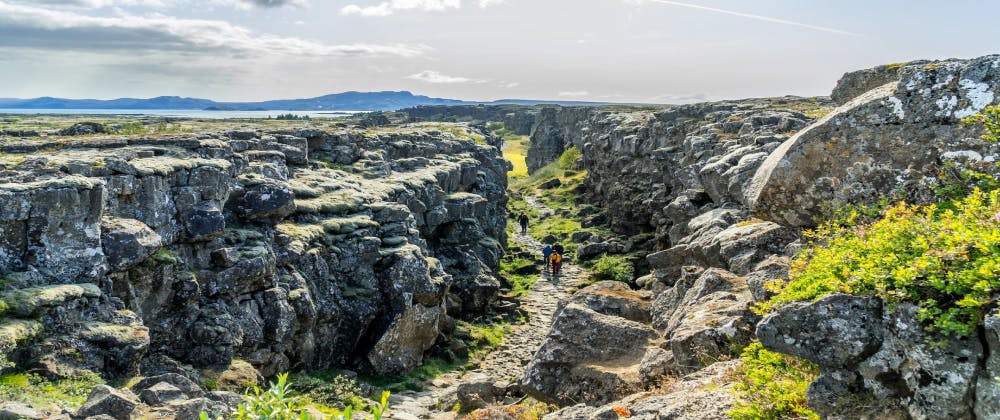
This UNESCO World Hertiage site is the first stop on the Golden Circle and it is the historic location of the Alþing (Althing), Iceland's parliament from the 10th to 18th century. The park sits on the rift between the Eurasian and North Atlantic tectonic plates - one of the only places in the world you can see tectonic plates drift apart.
Eagle-eyed Game of Thrones fans may recocgnise Thingvellir from the series. The rocky canyon near the dramatic Oxararfoss waterfall appears as the Bloody Gate, which guards the Vale of Arryn.
Game of Thrones Travel Guide
From the medieval streets of King's Landing to the icy landscapes north of the Wall, the Game of Thrones universe is easier to explore than you might think.
Westeros awaits...Gullfoss
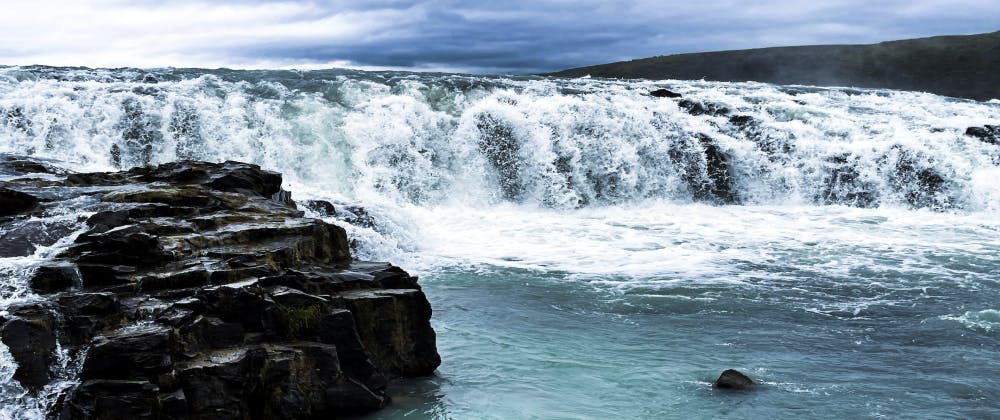
Probably the best known of Icelands MANY waterfalls, Gullfoss can be found on the Golden Circle. The water descends 32m into the canyon below in 2 steps, and in the height of summer around 140 cubic metres flow over the falls every second.
Watch out, you might get sprayed by the water!
Skogafoss
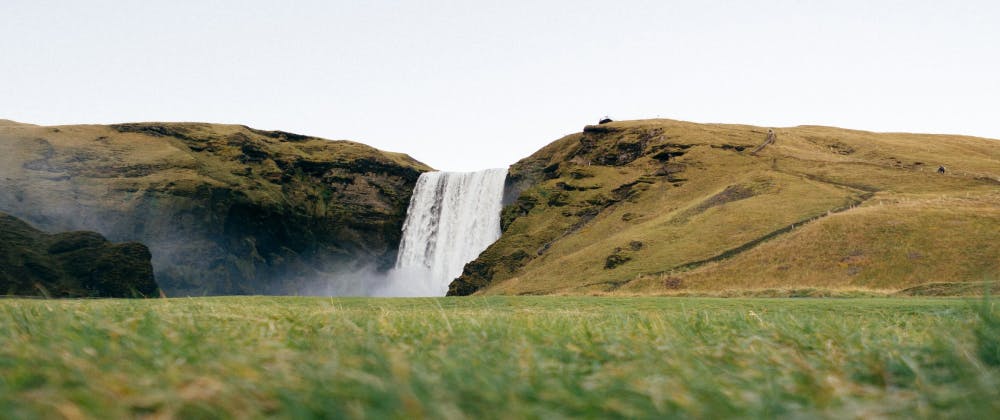
Skogafoss is a little further off the Golden Circle, but still a day trip away from Reyjkavik. With a drop of over 60m, it's one of the biggest waterfalls in the country and you can walk right up to the base of the falls.
It's one of the best ways to experience the sheer power behind Iceland's waterfalls.
Akureyri
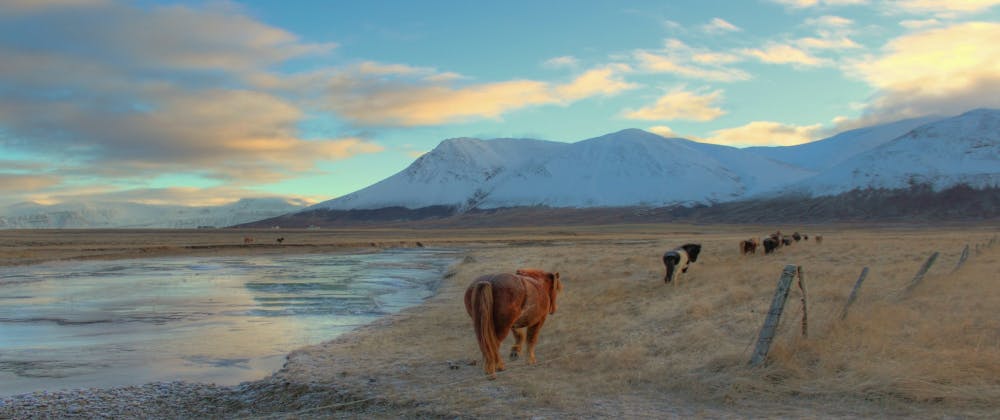
If you're taking a longer trip to Iceland then make your way north to Akureyri. It's easily accessible on the Ring Road, though this is more challenging in the winter months.
Here you can explore the fjords, see the famous Icelandic horses and go whale watching. Whale watching is popular all year, but if you're travelling in summer, it's possible to spot humpback and minke whales in the evening. Just bring something warm to wear and a camera!
20 amazing things to do in Iceland
From whale watching to bar hopping with the chance seeing the Northern Lights, we've rounded up the top 20 activities in Reykjavik and beyond.
Discover more...When is the best time to visit Iceland?
High season in Iceland is from June to August, when the days are at their longest and the weather is at its warmest. Most of Iceland lies just outside the Arctic Circle so it doesn't experience true midnight sun – but in the height of summer, the nights in Iceland are just a few hours of twilight as the sun dips below the horizon. In other words, it doesn't get dark, making it the best time to go whale watching, cycling, horse riding and road tripping.
The summer solstice, around June 21, is celebrated with parties, festivals and bonfires. And then there's Jónsmessa, a national holiday celebrating John the Baptist when it's said the island's elves come out of hiding.
Wondering when is the best time to see the Northern Lights in Iceland? You'll want to visit in winter, particularly between October and March. The midwinter months have the longest nights, but also a greater chance of clouds, so clearer skies are more likely if you visit in late autumn or early spring.
To maximise your chance of seeing the lights you need a dark night, so head away from the city lights. Specialist Northern Lights tours will take you to locations with less light pollution. If you visit for a long weekend you might be lucky, but the longer you can stay, the better chance you have of catching a dark, clear night and seeing some aurora action.
The lights require the right atmospheric conditions and are quite unpredictable, so make sure you plan some other activities so your holiday is a good experience with or without the lights.
What to eat in Iceland
As you'd expect from a small island nation, fish is an important staple in Icelandic cuisine. Salmon, herring, haddock and cod are all commonly found on Icelandic menus. As well as being caught and eaten fresh, fish may be preserved by curing, pickling or salting – salt cod has a distinctive flavour quite different to fresh cod, and appears in hearty fish stews.
More unusual Icelandic recipes use fermented shark (hákarl), smoked puffin (lundi), and whole boiled sheep's head (svið). Wash your meal down with a glass or two of brennivin, a schnapps-like drink served chilled.
TopIceland FAQs
What is the best month to visit Iceland?
The best month to visit Iceland depends on what you want to get up to while you're there. If you're heading to Iceland to experience the beautiful winter landscapes and catch a glimpse of the Northern Lights, the best months for you are between September and March, particularly around the equinoxes in March and September.
If you're planning an outdoor adventure where having the weather and sunlight on your side is a big plus, the best time to visit is in summer between June and August. May and September are also a great choice if you're looking for a quieter break as these off-peak months usually attract less crowds but the weather is usually still quite mild.
How many days do you need to see Iceland?
For first time visitors, we recommend at the very least 3 to 4 days in Iceland to explore Reykjavik and the South Coast. If you give yourself longer, 8+ days, you'll be able to cover all corners of Iceland via its famous Ring Road and get a true taste of the country.
Can you do Iceland in 3 days?
A 3-day trip is just about enough time to squeeze in Iceland's highlights. Our top tip would be to prioritise your must-see sights and plan an itinerary so you can make the absolute most of your time. Here's our recommended 3-Day Iceland Itinerary:
- Day 1 – Explore Reykjavik and visit the Blue Lagoon.
- Day 2 – Visit the South Coast, stopping off at famous natural attractions like Sólheimajökull glacier and Reynisfjara, the iconic black sandy beach.
- Day 3 – Tour the Golden Circle, which includes Thingvellir National Park, Geysir and Gullfoss waterfall.
Do people speak English in Iceland?
Yes, most Icelanders speak fluent English so there shouldn't be much of a language barrier when visiting.
Is Iceland in the EU?
Iceland is not a member of the EU. However, it is a member of the EEA (European Economic Area), which allows them to be part of the EU's single market







